What is Rigid Metal Conduit (RMC)?
1. Understanding Rigid Conduit
1.1 What Is Rigid Conduit?
Rigid conduit refers to a type of electrical conduit characterized by its solid, thick-walled construction. This conduit is designed to provide a robust and durable protective pathway for electrical wiring. Offering superior protection against physical damage and environmental factors.
1.2 Types of Rigid Conduit
1.2.1 Rigid Metal Conduit (RMC)
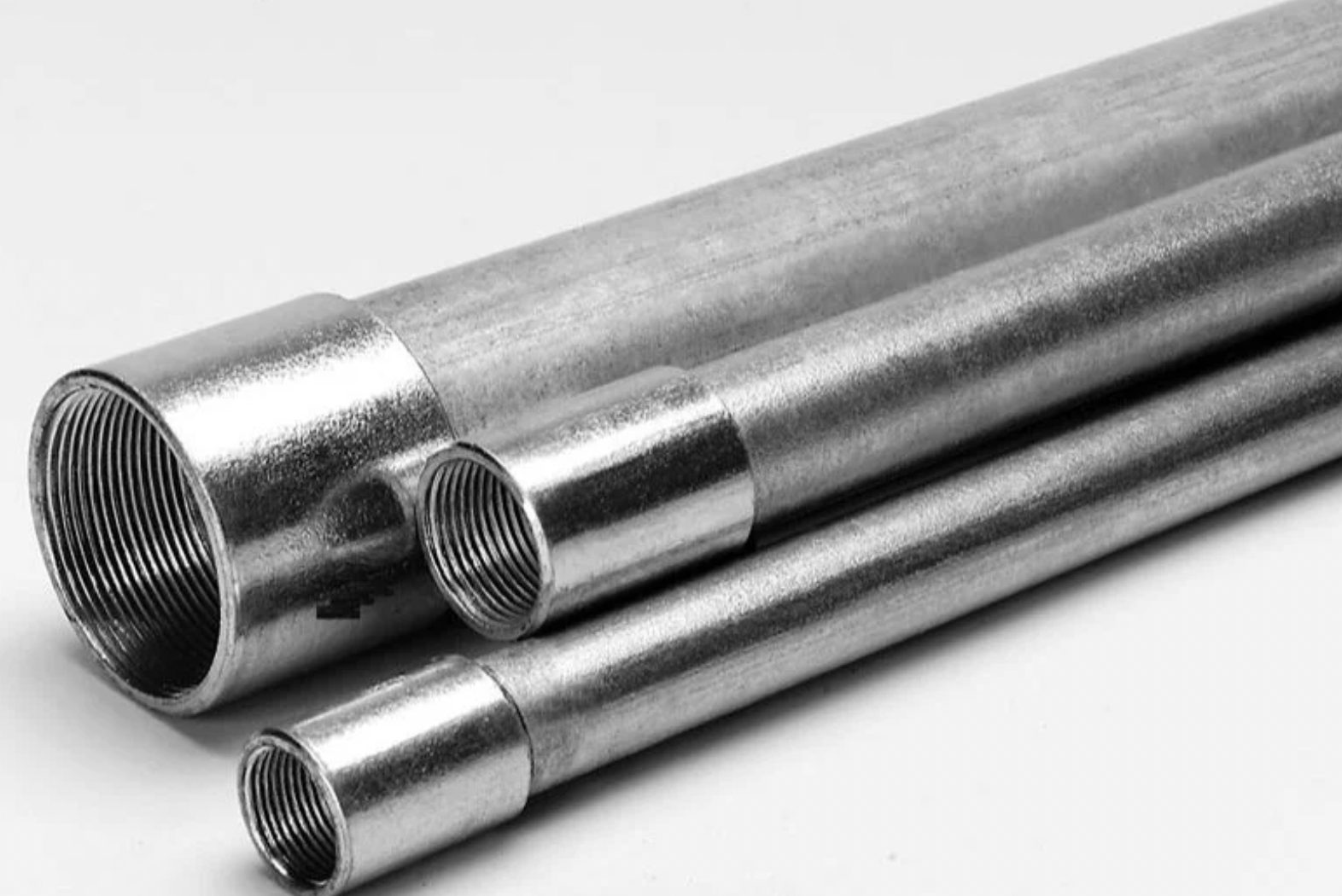
Rigid Metal Conduit (RMC) is a threadable raceway of circular cross-section designed for the physical protection and routing of conductors and cables (refer to NEC Article 344). RMC must be made from one of the following materials:
Steel with protective coatings
Aluminum
Red brass
Stainless steel
1.2.2 Galvanized Rigid Steel Conduit (GRC)
Galvanized Rigid Steel Conduit (GRC) is a specific type of RMC made from galvanized steel. The galvanization process involves coating the steel with a layer of zinc to enhance its corrosion resistance, making GRC particularly suitable for outdoor and industrial applications where exposure to moisture, chemicals, or other corrosive elements is a concern.
Because GRC is commonly referred to as RMC, there can be some confusion when purchasing. Therefore, it's essential to confirm with your supplier exactly what materials are used in the construction of the conduit to ensure it meets the specific requirements of your project.
In addition to GRC, there are other types of rigid conduits, including Rigid Aluminum Conduit (RAC) and Rigid Steel Conduit (RSC), each serving specific purposes based on their material properties. The names of these conduits directly indicate the material they are made from.
Rigid Aluminum Conduit (RAC) is made from lightweight yet durable aluminum, offering excellent resistance to corrosion and making it ideal for both indoor and outdoor applications where ease of handling and reduced weight are beneficial.
Rigid Steel Conduit (RSC) is constructed from robust steel, providing superior strength and mechanical protection for electrical wiring in harsh or high-impact environments.
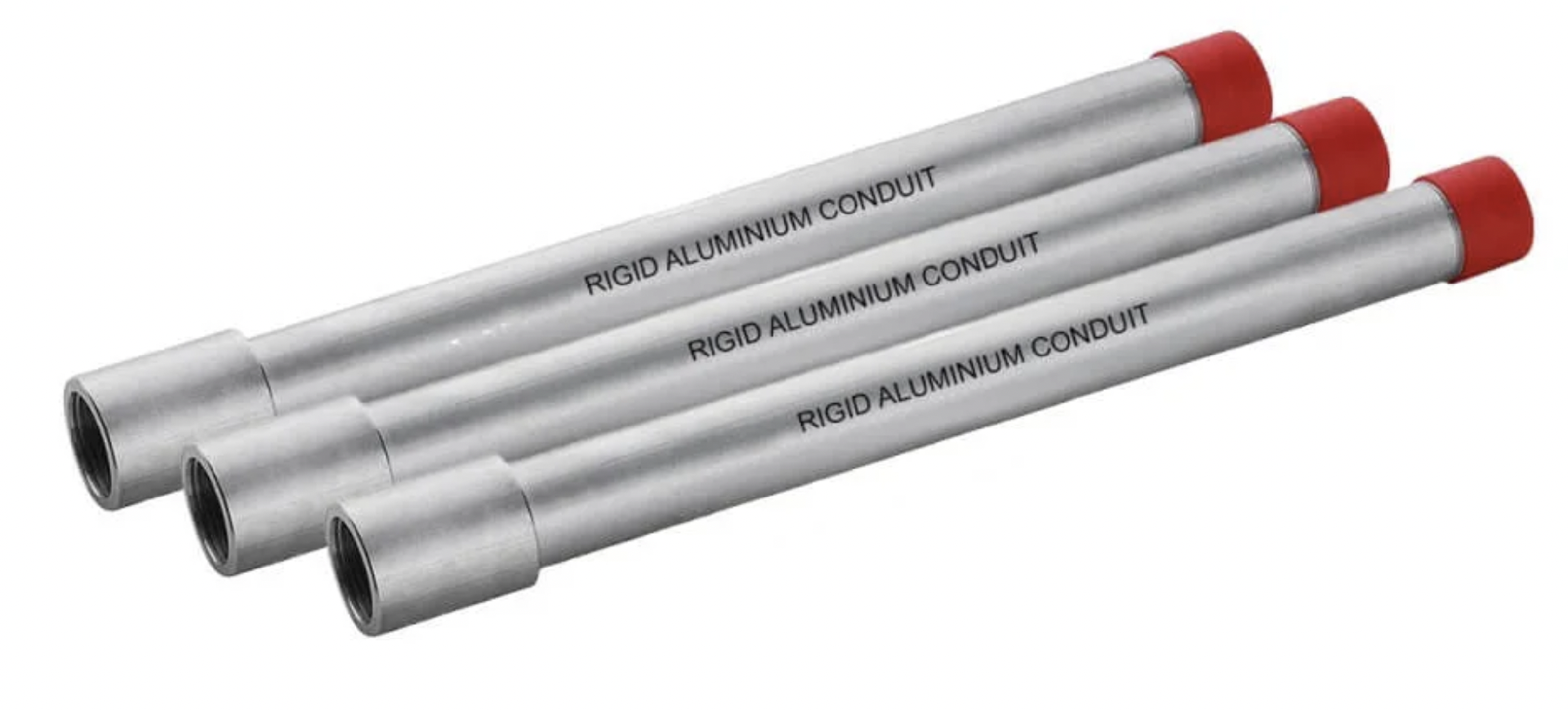
1.2.3 Intermediate Metal Conduit (IMC)
Intermediate Metal Conduit (IMC) is a steel threadable raceway of circular cross-section designed for the physical protection and routing of conductors and cables (refer to NEC Article 342). IMC is made of steel with protective coatings or stainless steel and weighs approximately 33% less than RMC.
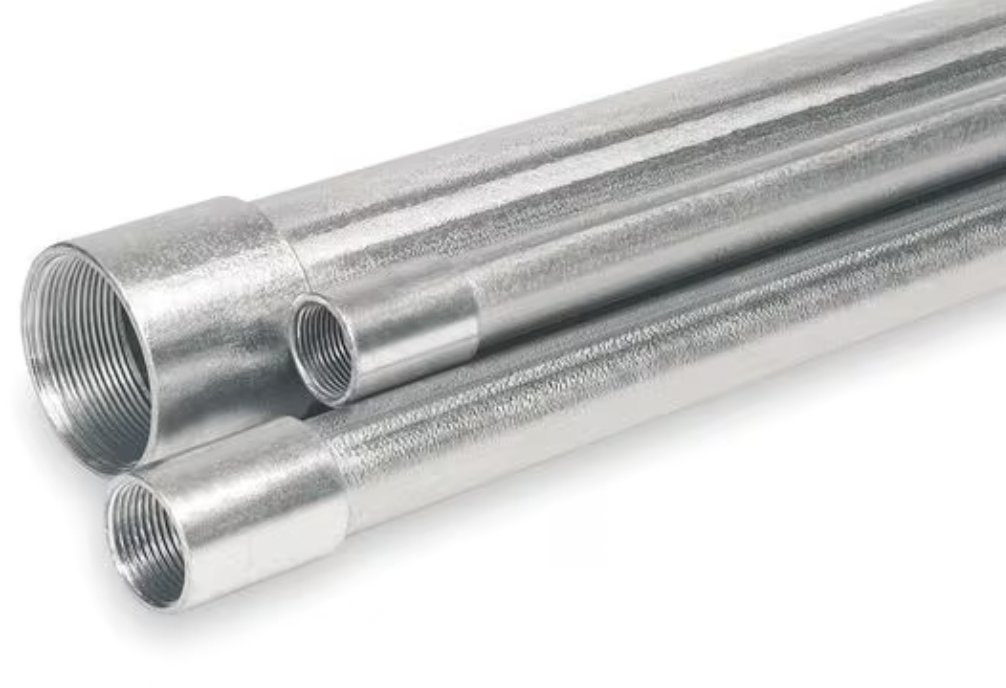
1.2.4 Reinforced Thermosetting Resin Conduit (RTRC)
Reinforced Thermosetting Resin Conduit (RTRC), also known as fiberglass conduit, is a rigid nonmetallic raceway of circular cross-section, with integral or associated couplings, connectors, and fittings for the installation of electrical conductors and cables (refer to NEC Article 353). RTRC features corrosion resistance, UV stability, and a superior temperature range, including excellent handling in low temperatures.
1.2.5 Rigid PVC Conduit
Rigid Polyvinyl Chloride (PVC) Conduit is a rigid nonmetallic raceway of circular cross-section (refer to NEC Article 352). Rigid PVC conduit is crafted from polyvinyl chloride, a highly durable plastic known for its exceptional resistance to moisture, chemicals, and environmental factors.
2. Sizes of Rigid Conduit
IMC/RGD conduits come in various sizes and wall thicknesses to meet different job requirements.
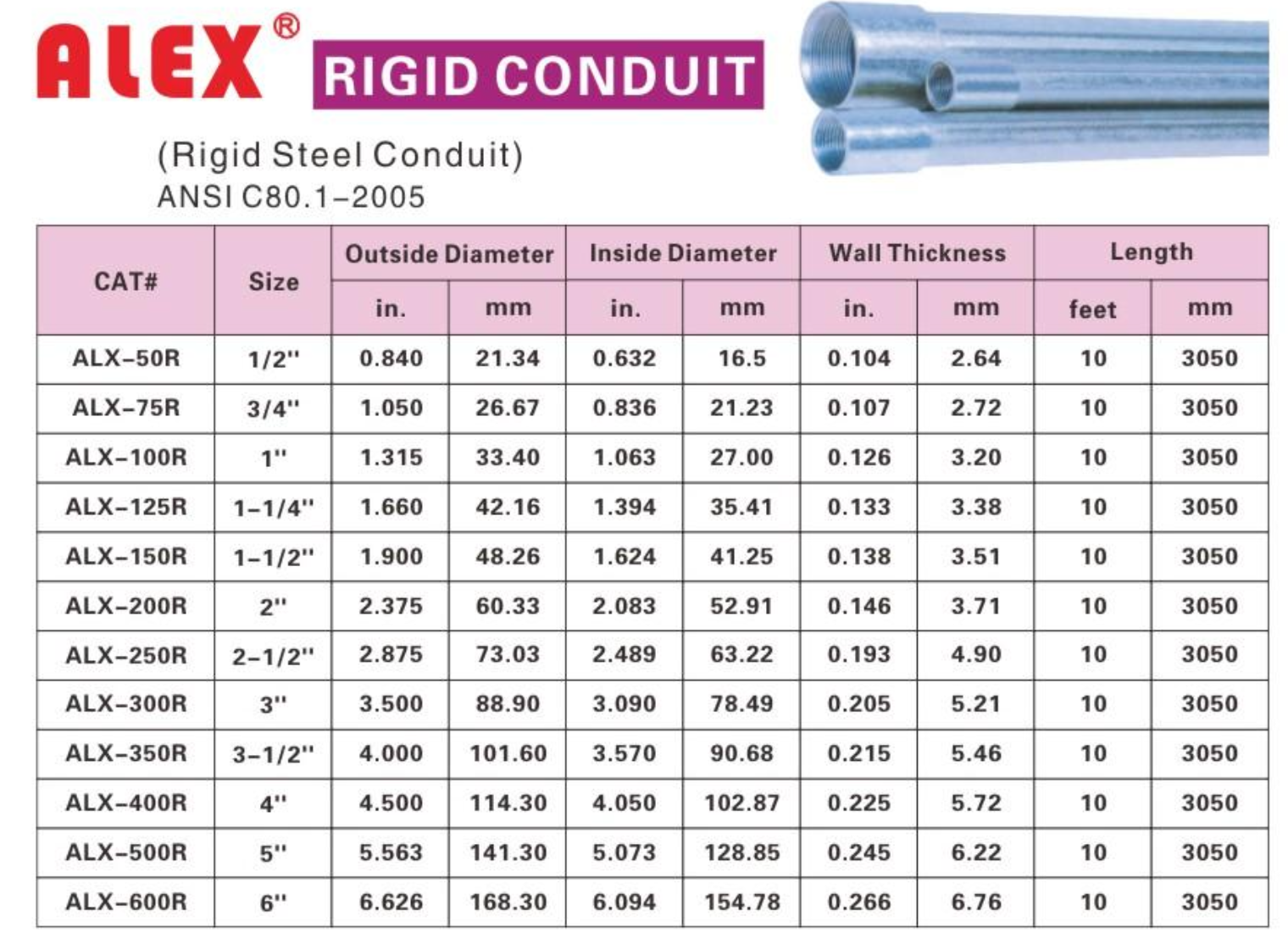
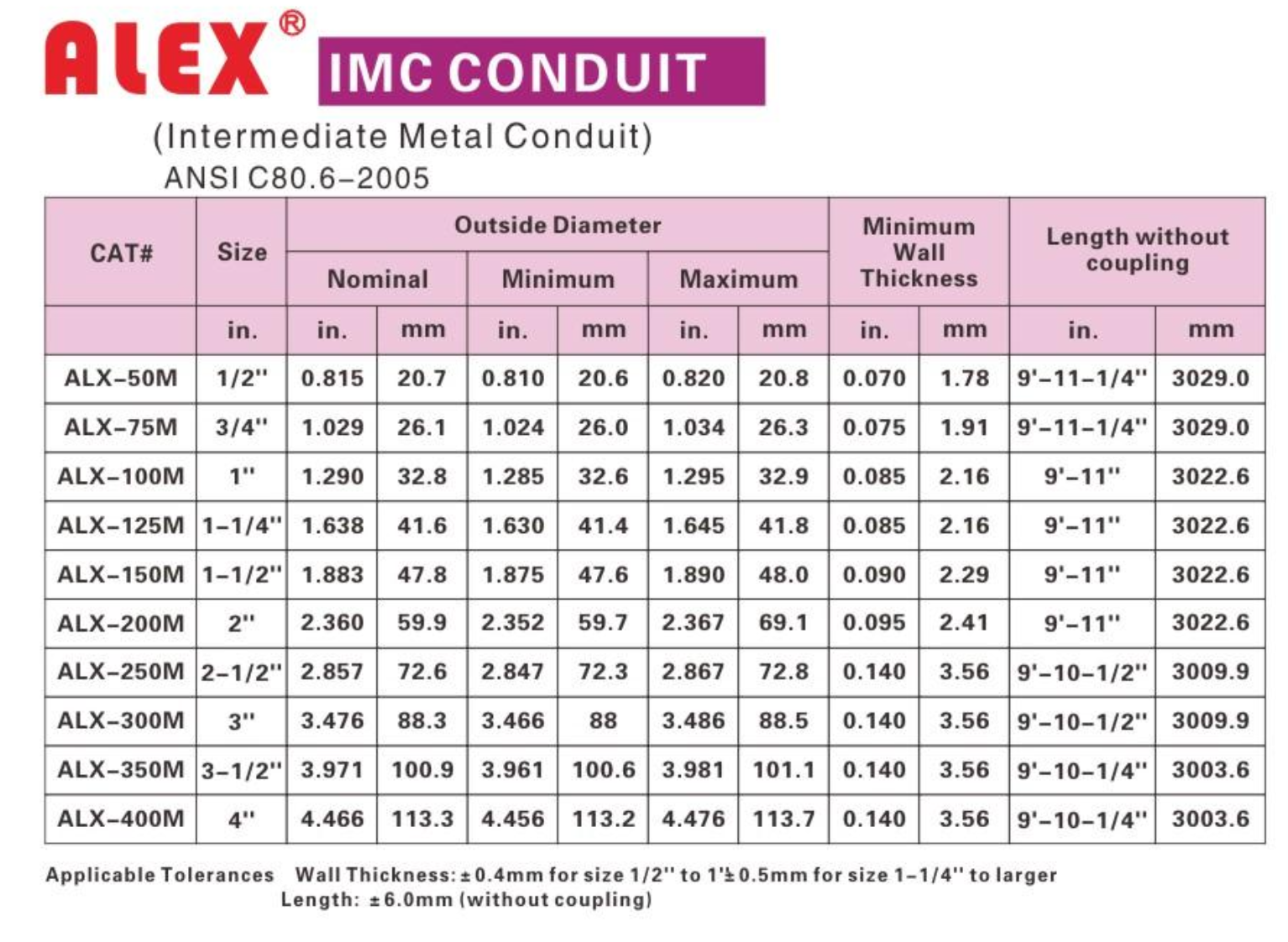
It's important to note that the dimensions and wall thickness may vary slightly depending on the supplier. These variations fall within the standard acceptable range. For specific wall thickness information, please confirm directly with the supplier.
3. Advantages of Rigid Conduit
3.1 Durability and Strength
Rigid conduit is highly durable and resistant to physical damage. Its solid construction protects electrical wiring from impacts, crushing, and other potential hazards, making it suitable for both exposed and concealed installations in demanding environments.
3.2 Protection Against Environmental Factors
Rigid conduit provides excellent protection against environmental elements such as moisture, chemicals, and UV radiation. This makes it ideal for outdoor installations, underground wiring, and environments where exposure to harsh conditions is a concern.
3.3 Fire Resistance
Certain types of rigid conduit, such as steel conduit, offer fire-resistant properties, helping to contain the spread of flames in the event of a fire. This enhances the overall safety of the electrical system.
3.4 Long Lifespan
Due to its robust construction and resistance to corrosion and wear, rigid conduit has a long service life. This reduces the need for frequent replacements or repairs, leading to lower maintenance costs over time.
3.5 Versatility in Applications
Rigid conduit is versatile and can be used in a wide >
EMT: Typically operates within a temperature range of -30°C to 60°C (-22°F to 140°F), making it suitable for standard indoor environments.
RMC and IMC: Made from galvanized steel, designed for more demanding conditions with temperature ranges often between -55°C and 100°C (-67°F to 212°F), providing robust protection in industrial and outdoor settings.
PVC Conduit: Generally supports temperatures from -25°C to 60°C (-13°F to 140°F), ideal for underground and wet environments.
RTRC: Offers superior resistance to extreme temperatures, typically from -40°C to 120°C (-40°F to 248°F), used in harsh industrial conditions.
It's essential to note that temperature tolerances can vary among different suppliers due to variations in raw materials and protective coatings. For instance, some specialized PVC conduits are designed to withstand temperatures ranging from -45°C to +150°C (-49°F to 302°F), showcasing how advanced formulations can extend performance beyond standard specifications.
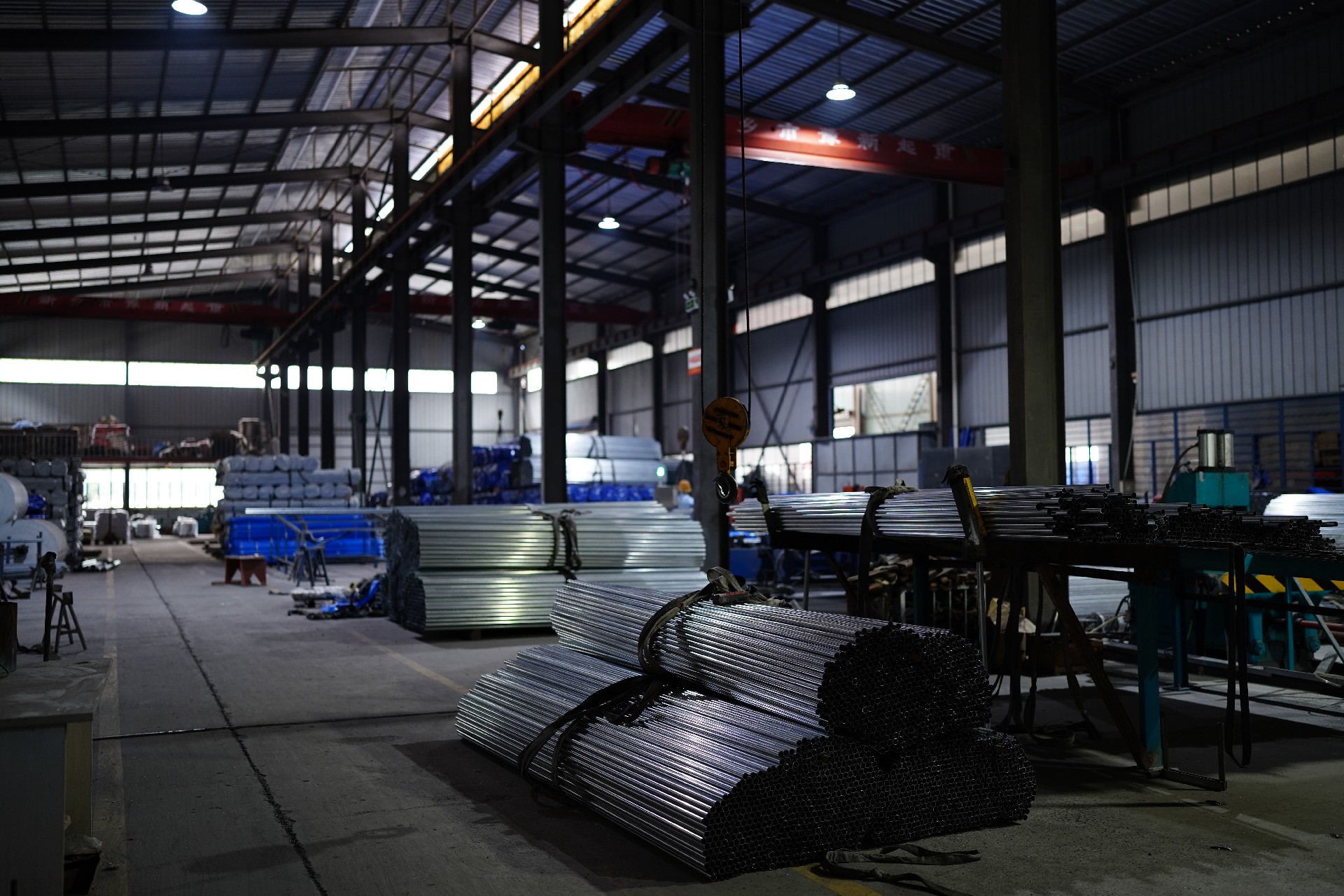
FAQs
1. What is the difference between EMT conduit and IMC?
Intermediate Metal Conduit (IMC) is a type of conduit that is lighter than Rigid Metal Conduit (RMC) but heavier and more durable than Electrical Metallic Tubing (EMT). While EMT is a thin-walled, lightweight conduit ideal for indoor applications and easier installation, IMC offers a middle ground with greater strength and protection against physical damage and corrosion, making it suitable for both indoor and outdoor use. IMC provides a balance of durability and ease of handling, making it a versatile choice in many electrical installations.
2. Is RMC the same as RGS or EMT?
RGS, meaning Rigid Galvanized Steel, is a specific type of RMC made from galvanized steel. RMC and IMC are closely related, both featuring threaded ends and coupled with threaded fittings, and can involve threadless fittings if applicable. The difference is that IMC has thinner walls and is made from a stronger alloy of steel to compensate. They are both considered equally strong and generally can be used in the same applications. IMC has the advantage of being cheaper, lighter in weight, and having slightly more fill area in the same trade size, while RMC is generally more available and easier to field work (threading, bending, etc.).
EMT cannot be threaded and is built up of couplings and connectors that attach by setscrews or compression glands. EMT is commonly used as an interior raceway, in contrast to its rigid counterparts. EMT is not as robust against physical damage as RMC and IMC and is therefore not to be used where it is "subject to physical damage."
3. Can EMT and rigid conduit be bent?
Yes, EMT, often referred to as "thin-wall," is lighter and has thinner walls, making it easy to bend with standard conduit benders. Other types of rigid conduit, like RMC and IMC, are much harder to bend due to their thicker walls and greater strength. Bending rigid conduit is generally not recommended; instead, it's advisable to use conduit fittings to navigate corners or opt for flexible conduit depending on the requirements.

